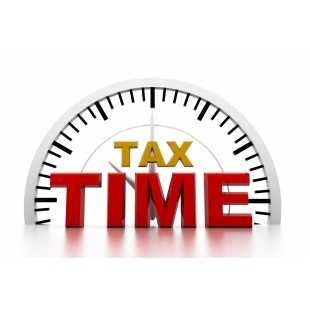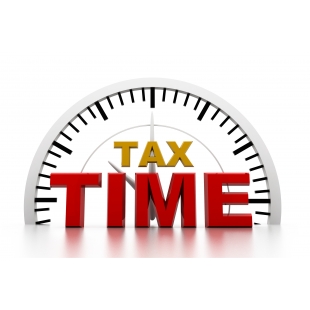US Tax information update
-

Interest rates increase for the first quarter of 2023
IR-2022-206, November 29, 2022
WASHINGTON — The Internal Revenue Service today announced that interest rates will increase for the calendar quarter beginning January 1, 2023.
For individuals, the rate for overpayments and underpayments will be 7% per year, compounded daily, up from 6% for the quarter that began on October 1. Here is a complete list of the new rates:
7% for overpayments (payments made in excess of the amount owed), 6% for corporations.
4.5% for the portion of a corporate overpayment exceeding $10,000.
7% for underpayments. (taxes owed but not fully paid)
9% for large corporate underpayments.
Under the Internal Revenue Code, the rate of interest is determined on a quarterly basis. For taxpayers other than corporations, the overpayment and underpayment rate is the federal short-term rate plus 3 percentage points.
Generally, in the case of a corporation, the underpayment rate is the federal short-term rate plus 3 percentage points and the overpayment rate is the federal short-term rate plus 2 percentage points. The rate for large corporate underpayments is the federal short-term rate plus 5 percentage points. The rate on the portion of a corporate overpayment of tax exceeding $10,000 for a taxable period is the federal short-term rate plus one-half (0.5) of a percentage point.
The interest rates announced today are computed from the federal short-term rate determined during October 2022. See the revenue ruling for details.
Revenue Ruling 2022-23PDF announcing the rates of interest will appear in Internal Revenue Bulletin 2022-51, dated December 19, 2022.
Source: https://www.irs.gov/newsroom/interest-rates-increase-for-the-first-quarter-of-2023
US TAX, U.S. TAXInterest rates increase for the first quarter of 2023more -

Get Ready now to file your 2022 federal income tax return
Issue Number: IR-2022-203 November 22, 2022
WASHINGTON — The Internal Revenue Service today encouraged taxpayers to take simple steps before the end of the year to make filing their 2022 federal tax return easier. With a little advance preparation, a preview of tax changes and convenient online tools, taxpayers can approach the upcoming tax season with confidence.
Filers can visit the Get Ready webpage at IRS.gov/getready to find guidance on what’s new and what to consider when filing a 2022 tax return. They can also find helpful information on organizing tax records and a list of online tools and resources.
Get Ready by gathering tax records:
When filers have all their tax documentation gathered and organized, they’re in the best position to file an accurate return and avoid processing or refund delays or receiving IRS letters. Now’s a good time for taxpayers to consider financial transactions that occurred in 2022, if they’re taxable and how they should be reported.
The IRS encourages taxpayers to develop an electronic or paper recordkeeping system to store tax-related information in one place for easy access. Taxpayers should keep copies of filed tax returns and their supporting documents for at least three years.
Before January, taxpayers should confirm that their employer, bank and other payers have their current mailing address and email address to ensure they receive their year-end financial statements. Typically, year-end forms start arriving by mail or are available online in mid-to-late January. Taxpayers should carefully review each income statement for accuracy and contact the issuer to correct information that needs to be updated.
Get Ready for what’s new for Tax Year 2022:
With the end of the year approaching, time is running out to take advantage of the Tax Withholding Estimator on IRS.gov. This online tool is designed to help taxpayers determine the right amount of tax to have withheld from their paycheck. Some people may have life changes like getting married or divorced, welcoming a child or taking on a second job. Other taxpayers may need to consider estimated tax payments due to non-wage income from unemployment, self-employment, annuity income or even digital assets. The last quarterly payment for 2022 is due on Jan. 17, 2023. The Tax Withholding Estimator on IRS.gov can help wage earners determine if there is a need to adjust their withholding, consider additional tax payments, or submit a new W-4 form to their employer to avoid an unexpected tax bill when they file.
As taxpayers gather tax records, they should remember that most income is taxable. This includes unemployment income, refund interest and income from the gig economy and digital assets.
Taxpayers should report the income they earned, including from part-time work, side jobs or the sale of goods. The American Rescue Plan Act of 2021 lowered the reporting threshold for third-party networks that process payments for those doing business. Prior to 2022, Form 1099-K was issued for third-party payment network transactions only if the total number of transactions exceeded 200 for the year and the aggregate amount of these transactions exceeded $20,000. Now a single transaction exceeding $600 can trigger a 1099-K. The lower information reporting threshold and the summary of income on Form 1099-K enables taxpayers to more easily track the amounts received. Remember, money received through third-party payment applications from friends and relatives as personal gifts or reimbursements for personal expenses is not taxable. Those who receive a 1099-K reflecting income they didn’t earn should call the issuer. The IRS cannot correct it.
Credit amounts also change each year like the Child Tax Credit (CTC), Earned Income Tax Credit (EITC) and Dependent Care Credit. Taxpayers can use the Interactive Tax Assistant on IRS.gov to determine their eligibility for tax credits. Some taxpayers may qualify this year for the expanded eligibility for the Premium Tax Credit, while others may qualify for a Clean Vehicle Credit through the Inflation Reduction Act of 2022.
Refunds may be smaller in 2023. Taxpayers will not receive an additional stimulus payment with a 2023 tax refund because there were no Economic Impact Payments for 2022. In addition, taxpayers who don’t itemize and take the standard deduction, won’t be able to deduct their charitable contributions.
The IRS cautions taxpayers not to rely on receiving a 2022 federal tax refund by a certain date, especially when making major purchases or paying bills. Some returns may require additional review and may take longer. For example, the IRS and its partners in the tax industry, continue to strengthen security reviews to protect against identity theft. Additionally, refunds for people claiming the Earned Income Tax Credit (EITC) or the Additional Child Tax Credit (ACTC) can’t be issued before mid-February. The law requires the IRS to hold the entire refund – not just the portion associated with EITC or ACTC. This law helps ensure taxpayers receive the refund they're due by giving the IRS time to detect and prevent fraud.
For taxpayers who are still waiting for confirmation that last year’s tax return processed, or for a tax year 2021 refund or stimulus payment to process, their patience is appreciated. As of Nov. 11, 2022, the IRS had 3.7 million unprocessed individual returns received this year. These include tax year 2021 returns and late filed prior year returns. Of these, 1.7 million returns require error correction or other special handling, and 2 million are paper returns waiting to be reviewed and processed. They also had 900,000 unprocessed Forms 1040-X for amended tax returns. The IRS is processing these amended returns in the order received and the current timeframe can be more than 20 weeks. Taxpayers should continue to check Where's My Amended Return? for the most up-to-date processing status available.
Renew expiring tax ID numbers:
Taxpayers should ensure their Individual Tax Identification Number (ITIN) hasn’t expired before filing a 2022 tax return. Those who need to file a tax return, should submit a Form W-7, Application for IRS Individual Taxpayer Identification Number now, to renew their ITIN. Taxpayers who fail to renew an ITIN before filing a tax return next year could face a delayed refund and may be ineligible for certain tax credits. Applying now will help avoid the rush as well as refund and processing delays in 2023.
Bookmark the following tools on IRS.gov:
Online tools are easy to use and available to taxpayers 24 hours a day. They provide key information about tax accounts and a convenient way to pay taxes. IRS.gov provides information in many languages and enhanced services for people with disabilities, including the Accessibility Helpline. Taxpayers who need accessibility assistance may call 833-690-0598. Taxpayers should use IRS.gov as their first and primary resource for accurate tax information.
Let Us Help You page. The Let Us Help You page on IRS.gov has links to information and resources on a wide range of topics.
Online Account. An IRS online account lets taxpayers securely access their personal tax information, including tax return transcripts, payment history, certain notices, prior year adjusted gross income and power of attorney information. Filers can log in to verify if their name and address is correct. They should notify IRS if their address has changed. They must notify the Social Security Administration of a legal name change to avoid a delay in processing their tax return.
IRS Free File. Almost everyone can file electronically for free on IRS.gov/freefile or with the IRS2Go app. The IRS Free File program, available only through IRS.gov, offers brand-name tax preparation software packages at no cost. The software does all the work of finding deductions, credits and exemptions for filers. It‘s free for those who qualify. Some Free File packages offer free state tax return preparation. Those who are comfortable preparing their own taxes can use Free File Fillable Forms, regardless of their income, to file their tax return either online or by mail.
Find a tax professional. The Choosing a Tax Professional page on IRS.gov has a wealth of information to help filers choose a tax professional. In addition, the Directory of Federal Tax Return Preparers with Credentials and Select Qualifications can help taxpayers find preparers in their area who hold professional credentials recognized by the IRS, or who hold an Annual Filing Season Program Record of Completion.
Interactive Tax Assistant. The Interactive Tax Assistant is a tool that provides answers to many tax questions. It can determine if a type of income is taxable and eligibility to claim certain credits or deductions. It also provides answers for general questions, such as determining filing requirement, filing status or eligibility to claim a dependent.
Where's My Refund? Taxpayers can use the Where’s My Refund? tool to check the status of their refund. Current year refund information is typically available online within 24 hours after the IRS receives an e-filed tax return. A paper return status can take up to four weeks to appear after it is mailed. The Where’s My Refund? tool updates once every 24 hours, usually overnight, so filers only need to check once a day.
Volunteer Income Tax Assistance. The Volunteer Income Tax Assistance (VITA) and Tax Counseling for the Elderly (TCE) programs offer free basic tax return preparation to qualified individuals.
Get refunds fast with Direct Deposit :
Taxpayers should prepare to file electronically and choose Direct Deposit for their tax refund – it’s the fastest and safest way to file and get a refund. Even when filing a paper return, choosing a direct deposit refund can save time. For those who do not have a bank account, the FDIC website offers information to help people open an account online.
Taxpayers can download Publication 5349, Tax Preparation is for Everyone, for more information to help them get ready to file.
Subscribe to IRS Tax Tips
Source: https://content.govdelivery.com/accounts/USIRS/bulletins/3396b1b?reqfrom=share
US TAX, U.S. TAXGet Ready now to file your 2022 federal income tax returnmore -

Under the Taxpayer Bill of Rights, all taxpayers have the right to finality of IRS matters
IRS Tax Tip 2022-169, November 3, 2022
By law, taxpayers interacting with the IRS have the right to finality. This right comes into play for taxpayers who are going through an audit. These taxpayers have the right to know when the IRS has finished the audit. This is one of ten basic rights — known collectively as the Taxpayer Bill of Rights.
Here's what taxpayers in the process of an audit, should know about their right to finality:
Taxpayers have the right to know:
The maximum amount of time they have to challenge the IRS's position.
The maximum amount of time the IRS has to audit a particular tax year or collect a tax debt.
When the IRS has finished an audit.
The IRS generally has three years from the date taxpayers file their returns to assess any additional tax for that tax year.
There are some limited exceptions to the three-year rule, including when taxpayers fail to file returns for specific years or file false or fraudulent returns. In these cases, the IRS has an unlimited amount of time to assess tax for that tax year
The IRS generally has 10 years from the assessment date to collect unpaid taxes. This 10-year period cannot be extended, except for taxpayers who enter into installment agreements, or the IRS obtains court judgments.
A statutory notice of deficiency is a letter proposing additional tax the taxpayer owes. This notice must include the deadline for filing a petition with the tax court to challenge the amount proposed.
Generally, a taxpayer will only be subject to one audit per tax year. However, the IRS may reopen an audit for a previous tax year, if the IRS finds it necessary. This could happen, for example, if a taxpayer files a fraudulent return.
More Information:
Publication 1, Your Rights as a Taxpayer
Taxpayer Advocate Service
Subscribe to IRS Tax Tips
Source: https://www.irs.gov/newsroom/under-the-taxpayer-bill-of-rights-all-taxpayers-have-the-right-to-finality-of-irs-matters
US TAX, U.S. TAXUnder the Taxpayer Bill of Rights, all taxpayers have the right to finality of IRS mattersmore -

Nine million people who missed expanded tax benefits still have time to file
COVID Tax Tip 2022-166, October 31, 2022
More than nine million people may qualify for tax benefits but didn't claim them by filing a 2021 federal income tax return. Many in this group may be eligible to claim some or all of the 2021 Recovery Rebate Credit, the Child Tax Credit, the Earned Income Tax Credit and other tax credits. These and other tax benefits were expanded under last year's American Rescue Plan Act and other recent legislation.
The only way to get the valuable benefits is to file a 2021 tax return
Often, people can get these expanded tax benefits, even if they have little or no income from a job, business or other source. This means that many people who don't normally need to file a tax return should do so for 2021, even if they haven't been required to file in recent years.
Eligible people can file a tax return even if they don't receive a letter. There's no penalty for a refund claimed on a tax return filed after the regular April 2022 tax deadline.
The expanded tax benefits include:
An expanded Child Tax Credit. Families can claim this credit, even if they received monthly advance payments during the last half of 2021. The total credit can be as much as $3,600 per child.
A more generous Earned Income Tax Credit. The law boosted the EITC for childless workers. There are also changes that can help low- and moderate-income families with children. The credit can be as much as $1,502 for workers with no qualifying children, $3,618 for those with one child, $5,980 for those with two children and $6,728 for those with at least three children.
The Recovery Rebate Credit. Those who missed out on last year's third round of Economic Impact Payments may be eligible to claim the RRC. Often referred to as stimulus payments, this credit can help eligible people whose third payment was less than the full amount, including those who welcomed a child in 2021. The maximum credit is $1,400 for each qualifying adult, plus $1,400 for each eligible child or adult dependent.
An increased Child and Dependent Care Credit. Families who have care expenses for a child or dependent so they can work or look for work can get a tax credit worth up to $4,000 for one qualifying person and $8,000 for two or more qualifying persons.
A deduction for gifts to charity. Most tax-filers who take the standard deduction can deduct eligible cash contributions they made during 2021. Married couples filing jointly can deduct up to $600 in cash donations and individuals can deduct up to $300 in donations. In addition, itemizers who make large cash donations often qualify to deduct the full amount in 2021.
Free File to stay open until November 17
To help people claim these benefits, Free File will remain open for an extra month this year, until November 17, 2022. People with income of $73,000 or less can electronically file a return for free using brand-name software.
People can also visit ChildTaxCredit.gov to file a 2021 income tax return. Individuals with income below $12,500 and couples with income below $25,000 may be able to file a simple tax return to claim the 2021 Recovery Rebate Credit and the Child Tax Credit.
More Information:
EITC Assistant
Does My Child/Dependent Qualify for the Child Tax Credit or the Credit for Other Dependents?
Am I Eligible to Claim the Child and Dependent Care Credit?
Subscribe to IRS Tax Tips
Source: https://www.irs.gov/newsroom/nine-million-people-who-missed-expanded-tax-benefits-still-have-time-to-file
US TAX, U.S. TAXNine million people who missed expanded tax benefits still have time to filemore -

Grandparents and others with eligible dependents shouldn’t miss out on the 2021 child tax credit
COVID Tax Tip 2022-165, October 27, 2022
Grandparents, foster parents or people caring for siblings or other relatives should check their eligibility to receive the 2021 child tax credit. People who claim at least one child as their dependent may not realize they could be eligible to benefit from the child tax credit.
Eligible taxpayers who received advance child tax credit payments last year should file a 2021 tax return to receive the second half of the credit. Eligible taxpayers who did not receive advance child tax credit payments last year can claim the full credit by filing a 2021 tax return.
People should review the eligibility rules to make sure they still qualify for the credit. The Interactive Tax Assistant can help people who aren't sure. Taxpayers who haven't qualified in the past should also check because they may now be able to claim the credit. The only way to receive the credit is to file a 2021 federal tax return.
What is the child tax credit expansion?
The child tax credit expansion increased the amount of money families can receive per child and expanded who can receive the payments. The credit increased from $2,000 to $3,600 per child for children under the age of six, from $2,000 to $3,000 for children over the age of 6 and raised the age limit from 16 to 17 years old.
The child tax credit expansion applies to tax year 2021 only.
Who qualifies for the child tax credit?
Taxpayers can claim the credit for each qualifying child who has a Social Security number that is valid for employment in the United States and issued by the Social Security Administration before the due date of their tax return. This includes the filing extension if the taxpayer requested the extension by the tax return's original due date.
To be a qualifying child for the 2021 tax year, the child must fit certain criteria.
What are the eligibility factors?
Individuals qualify for the full amount of the 2021 child tax credit for each qualifying child if they meet all eligibility factors and their annual income is not more than:
$150,000 if they're married and filing a joint return, or if they're filing as a qualifying widow or widower.
$112,500 if they're filing as a head of household.
$75,000 if they're a single filer or are married and filing a separate return.
Parents and guardians with higher incomes may be eligible to claim a partial credit.
IRS Free File available until November 17 to help more people receive credits
The IRS Free File program offers eligible taxpayers brand-name tax preparation software to use at no cost. It's free for most individual filers who earned $73,000 or less in 2021. To help more people claim a variety of tax credits and benefits, Free File will remain open for an extra month this year, until November 17, 2022.
Taxpayers who earned more than $73,000 in 2021 and are comfortable preparing their own taxes can use Free File Fillable Forms. This electronic version of paper IRS tax forms is also used to file tax returns online.
More information:
2021 Child Tax Credit and Advance Child Tax Credit Payments Frequently Asked Questions
Subscribe to IRS Tax Tips
Source: https://www.irs.gov/newsroom/grandparents-and-others-with-eligible-dependents-shouldnt-miss-out-on-the-2021-child-tax-credit
US TAX, U.S. TAXGrandparents and others with eligible dependents shouldn’t miss out on the 2021 child tax creditmore -

Important info for people considering making early withdraws from retirement funds
COVID Tax Tip 2022-162, October 24, 2022
No matter how much people plan, unexpected events occur. Often, those events result in unplanned expenses. To cover these costs sometimes people, withdraw funds from their retirement savings early. While this may seem like an easy way to get cash quick, early withdrawals can come with heavy penalties and costly tax consequences. Here's some important info for people to consider before they dip into their hard-earned retirement savings.
Workplace retirement plans: 401(k), 403(b) and 457(b)
These plans can distribute benefits only when certain events occur. The plan's summary description should clearly state when a distribution can occur. It will also state if the plan allows hardship distributions, early withdrawals or loans.
Hardship distributions are withdrawals from a participant's account made because of an immediate and heavy financial need and it's limited to the amount necessary to satisfy that financial need. The need of the employee includes the need of the employee's spouse or dependent.
Hardship distributions are includible in gross income unless they consist of designated Roth contributions.
Distributions before the participant turns 65, or the plan's normal retirement age, if earlier, may result in an additional income tax of 10% of the amount withdrawn.
Repaying hardship distributions back to the plan or rolling it over to another plan or IRA isn't permitted.
Borrowers repay loans from these plans back to the retirement account. Borrowers should review the limits on loan amounts and other requirements. Taxes on this money don't occur if the loan meets the rules and repayment happens on schedule.
Required minimum distributions
Taxpayers must make required minimum distributions each year beginning with the year the taxpayer turns 72, 70 ½ if the taxpayer turned 70 ½ in 2019. People calculate the RMD by dividing the IRA account balance as of December 31 of the prior year by the applicable distribution period or life expectancy. RMDs are waived for 2020 due to COVID-19 relief provisions. Required minimum distributions are not required for Roth IRA.
IRAs and IRA-based plans
Individuals can take distributions from their IRA, SEP-IRA or SIMPLE-IRA at any time. Taxpayers do not need to show a hardship to take a distribution – they can just contact the financial institution managing the account.
Early distributions occur when individuals withdraw money from an Individual Retirement Account or retirement plan before age 59½.These retirement plan distributions are subject to income tax. Individuals must also pay an additional 10% early withdrawal tax unless an exception to the early distribution tax applies.
Regardless of age, the account holder must file a Form 1040 Individual Income Tax Return showing the amount of the withdrawal and complete and attach a Form 5329, Additional Taxes on Qualified Plans, Including IRAs, and Other Tax-Favored Accounts, to the tax return. These are requirements for early withdrawals and regular distributions.
Coronavirus-related distributions and loans
The CARES Act made it easier to access savings in IRAs and workplace retirement plans for those affected by the coronavirus. Certain distributions made from January 1, 2020, through December 30, 2020, from IRAs or workplace retirement plans to qualified individuals may be treated as coronavirus-related distributions.
These distributions aren't subject to the 10% additional tax on early distributions, including the 25% additional tax on certain SIMPLE IRA distributions.
Repayment to an IRA or workplace retirement plan can occur within three years.
Taxpayers can include Coronavirus-related distributions in income over 3 years, one-third each year, or if elected, in the year of the distribution.
Divorce-related distributions
Early distributions taken from a traditional IRA to satisfy a divorce requirements or court order are subject to regular income tax requirements and the 10% additional tax unless there is a qualifying exception.
Source: https://www.irs.gov/newsroom/important-info-for-people-considering-making-early-withdraws-from-retirement-funds
US TAX, U.S. TAXImportant info for people considering making early withdraws from retirement fundsmore -

Topics in the News
Here you'll find items of current interest — new programs, recent guidance or timely reminders.
Tax extension filers don't need to wait until October 17
Taxpayers who requested an extension to file their 2021 tax return don't have to wait until mid-October to file. If a taxpayer has all the necessary information to file an accurate return, they can file electronically at any time before the October deadline and avoid a last-minute rush to file.
Taxpayers who requested more time to file an accurate return have until October 17, 2022. Those who have what they need to file, however, should file as soon as possible to avoid delays in processing their return.
Tax season alerts and planning ahead for 2023
Taxpayers face a number of issues due to critical tax law changes that took place in 2021 and ongoing challenges related to the pandemic. The IRS continues to share updated information for people now filing their 2021 tax returns and those planning for the 2022 return they will file next year, as well as anyone who has previous year tax returns awaiting processing by the IRS.
This special alerts page is designed to help anyone whether they are now preparing their tax return or are awaiting processing of a return or refund and the latest updates on IRS letters, or notices. Newer updates will be placed at the top of this page; the IRS will also provide critical updates through social media.
Coronavirus Tax Relief
For the latest information about coronavirus tax relief, see the Coronavirus Tax Relief and Economic Impact Payments page.
Visit our Coronavirus and Economic Impact Payments: Resources and Guidance page for our latest content including news releases, Tax Tips, frequently asked questions, multilingual partner materials and more.
To learn about IRS operations during COVID-19, visit our operations page for up-to-date status on affected IRS operations and services.
Outreach Connection
Get free tax content to share with your staff, clients, customers or colleagues that you can include in your:
Website
e-Newsletter
Twitter, Instagram or other social media
Taxpayer Bill of Rights
All taxpayers have a set of fundamental rights they should be aware of when dealing with the IRS. Explore your rights and our obligations to protect them.
The Right to Be Informed
The Right to Quality Service
The Right to Pay No More than the Correct Amount of Tax
The Right to Challenge the IRS's Position and Be Heard
The Right to Appeal an IRS Decision in an Independent Forum
The Right to Finality
The Right to Privacy
The Right to Confidentiality
The Right to Retain Representation
The Right to a Fair and Just Tax System
Tax Withholding
The IRS encourages taxpayers to perform a quick "paycheck checkup" by using the Withholding Estimator to check if they have the right amount of withholding for their personal situation.
Consumer Alerts on Tax Scams
Note that the IRS will never:
Call to demand immediate payment using a specific payment method such as a prepaid debit card, gift card or wire transfer. Generally, the IRS will first mail you a bill if you owe any taxes.
Threaten to immediately bring in local police or other law-enforcement groups to have you arrested for not paying.
Demand that you pay taxes without giving you the opportunity to question or appeal the amount they say you owe.
Ask for credit or debit card numbers over the phone.
For more information on tax scams, please see Tax Scams/Consumer Alerts. For more information on phishing scams, please see Suspicious emails and Identity Theft.
Source: https://www.irs.gov/newsroom/whats-hot
US TAX, U.S. TAXTopics in the Newsmore -

IRS Updates Public Key for FATCA Filing
IRS Updates Public Key for FATCA Filing
As you are aware, the public/private key pairs used for encryption for FATCA filings have an expiration date.The IRS Public Key for FATCA filing will expire soon. The IRS has a new key and will replace the existing key on Friday, October 14, 2022. After Friday, October 14, you will need to download the new IRS Public Key from IDES ( International Data Excahnge Service) to file your FATCA Reports.
As a reminder,
when purchasing a new digital certificate or replacing one that is about to expire,
->IDES only recognizes and accepts digital certificates issued by IRS approved Certificate Authorities (CA).
For more information on federal taxes please visit IRS.gov.
Source: https://content.govdelivery.com/accounts/USIRS/bulletins/32f7397
US TAX, U.S. TAXIRS Updates Public Key for FATCA Filingmore -

Reminder: File 2019 and 2020 returns by Sept. 30 to get COVID penalty relief
IR-2022-163, September 22, 2022
WASHINGTON ̶ The Internal Revenue Service today reminded struggling individuals and businesses, affected by the COVID-19 pandemic, that
→they may qualify for late-filing penalty relief
if they file their 2019 and 2020 returns by Sept. 30, 2022.
Besides providing relief to both individuals and businesses impacted by the pandemic, this step is designed to allow the IRS to focus its resources on processing backlogged tax returns and taxpayer correspondence to help return to normal operations for the 2023 filing season.
“We thought carefully about the type of penalties, the period covered and the duration before granting this penalty relief. We understand the concerns being raised by the tax community and others about the Sept. 30 penalty relief deadline,” said IRS Commissioner Chuck Rettig. “Given planning for the upcoming tax season and ongoing work on the inventory of tax returns filed earlier this year, this penalty relief deadline of Sept. 30 strikes a balance. It is critical to us to
not only provide important relief to those affected by the pandemic,
but this deadline also allows adequate time to prepare our systems and our workstreams to serve taxpayers and the tax community during the 2023 filing season.”
The relief, announced last month, applies to the failure-to-file penalty. The penalty is typically assessed at a rate of 5% per month, up to 25% of the unpaid tax, when a federal income tax return is filed late. This relief applies to forms in both the Form 1040 and 1120 series, as well as others listed in Notice 2022-36, posted on IRS.gov.
For anyone who has gotten behind on their taxes during the pandemic, this is a great opportunity to get caught up. To qualify for relief, any eligible income tax return must be filed on or before Sept. 30, 2022.
Those who file during the first few months after the Sept. 30 cutoff will still qualify for partial penalty relief. That’s because,
for eligible returns filed after that date, the penalty starts accruing on Oct. 1, 2022, rather than the return’s original due date.
Because the penalty accrues, based on each month or part of a month that a return is late,
filing sooner will limit any charges that apply.
Unlike the failure-to-file penalty, the failure-to-pay penalty and interest will still apply to unpaid tax, based on the return’s original due date. The failure-to-pay penalty is normally 0.5% (one-half-of-one percent) per month. The interest rate is currently 5% per year, compounded daily, but that rate is due to rise to 6% on Oct. 1, 2022.
Taxpayers can limit these charges by paying promptly. For more information, including details on fast and convenient electronic payment options, visit IRS.gov/Payments. Penalty and interest charges generally don’t apply to refunds.
The notice also provides details on relief for filers of certain international information returns when a penalty is assessed at the time of filing. No relief is available for applicable international information returns when the penalty is part of an examination. To qualify for this relief, any eligible tax return must be filed on or before Sept. 30, 2022.
Penalty relief is automatic. This means that eligible taxpayers who have already filed their return do not need to apply for it, and those filing now do not need to attach a statement or other documents to their return. Generally, those who have already paid the penalty are getting refunds, most by the end of September.
Penalty relief is not available in some situations, such as
where a fraudulent return was filed,
where the penalties are part of an accepted offer in compromise or a closing agreement,
or where the penalties were finally determined by a court.
This relief is limited to the penalties that the notice specifically states are eligible for relief. For ineligible penalties, such as the failure-to-pay penalty, taxpayers may use existing penalty relief procedures, such as applying for relief under the reasonable cause criteria or the First-Time Abate program. Visit IRS.gov/penaltyrelief for details.
This relief doesn’t apply to 2021 returns. Whether or not they have a tax-filing extension, the IRS urges everyone to file their 2021 return soon to avoid processing delays. For filing tips, visit IRS.gov.
Source: https://www.irs.gov/newsroom/reminder-file-2019-and-2020-returns-by-sept-30-to-get-covid-penalty-relief
US TAX, U.S. TAXReminder: File 2019 and 2020 returns by Sept. 30 to get COVID penalty reliefmore -

Parents can boost their back-to-school budget by claiming tax credits and refunds
COVID Tax Tip 2022-134, August 31, 2022
Summer is slipping away and another school year is starting. As kids head back to the classroom, parents are ticking items off the school supply list. If they want to boost their back-to-school budgets, parents and guardians should make sure they aren't missing out on their 2021 refunds and tax credits.
Many people don't get their tax refund because they didn't file a federal tax return. Some people choose not to file a tax return because they didn't earn enough money to be required to file. Generally, they won't receive a failure to file penalty if they are owed a refund – but they won't receive their refund either.
A refund isn't the only money people might be missing out on when they don't file. If they're eligible for tax credits, like the child tax credit and the earned income tax credit, they're leaving that money on the table as well.
The child tax credit
The child tax credit helps families with qualifying children get a tax break. People may be able to claim the credit even if they don't normally file a tax return.
Taxpayers qualify for the full amount of the 2021 child tax credit for each qualifying child if they meet all eligibility factors and their annual income isn't more than:
$150,000 if they're married and filing a joint return, or if they're filing as a qualifying widow or widower.
$112,500 if they're filing as a head of household.
$75,000 if they're a single filer or are married and filing a separate return.
Parents and guardians with higher incomes may be eligible to claim a partial credit. The Interactive Tax Assistant can help people check if they qualify.
The earned income tax credit
The earned income tax credit helps low- to moderate-income workers and families get a tax break. If someone qualifies, they can use the credit to reduce the taxes they owe – and maybe increase their refund.
Low- to moderate-income workers with qualifying children may be eligible to claim the earned income tax credit if certain qualifying rules apply to them. People may qualify for the EITC even if they can't claim children on their tax return. Visit IRS.gov to learn how to claim the EITC without a qualifying child.
People who qualify for the EITC, may also qualify for other tax credits, including:
Child tax credit and the credit for other dependents
Child and dependent care credit
Education credits
Recovery rebate credit
More information:
Don't Lose Your Refund by Not Filing
Earned Income Tax Credit
Child Tax Credit
Source: https://www.irs.gov/newsroom/parents-can-boost-their-back-to-school-budget-by-claiming-tax-credits-and-refunds
US TAX, U.S. TAXParents can boost their back-to-school budget by claiming tax credits and refundsmore -

Info to help with tax authorizations now available in traditional Chinese
IR-2022-155, August 24, 2022
WASHINGTON — To help struggling taxpayers affected by the COVID-19 pandemic, the Internal Revenue Service today issued Notice 2022-36PDF, which provides penalty relief to most people and businesses who file certain 2019 or 2020 returns late.
The IRS is also taking an additional step to help those who paid these penalties already. Nearly 1.6 million taxpayers will automatically receive more than $1.2 billion in refunds or credits. Many of these payments will be completed by the end of September.
Besides providing relief to both individuals and businesses impacted by the pandemic, this step is designed to allow the IRS to focus its resources on processing backlogged tax returns and taxpayer correspondence to help return to normal operations for the 2023 filing season.
"Throughout the pandemic, the IRS has worked hard to support the nation and provide relief to people in many different ways," said IRS Commissioner Chuck Rettig. "The penalty relief issued today is yet another way the agency is supporting people during this unprecedented time. This penalty relief will be automatic for people or businesses who qualify; there's no need to call."
The relief applies to the failure to file penalty. The penalty is typically assessed at a rate of 5% per month and up to 25% of the unpaid tax when a federal income tax return is filed late. This relief applies to forms in both the Form 1040 and 1120 series, as well as others listed in Notice 2022-36PDF, posted today on IRS.gov.
To qualify for this relief, any eligible income tax return must be filed on or before September 30, 2022.
In addition, the IRS is providing penalty relief to banks, employers and other businesses required to file various information returns, such as those in the 1099 series. To qualify for relief, the notice states that eligible 2019 returns must have been filed by August 1, 2020, and eligible 2020 returns must have been filed by August 1, 2021.
Because both of these deadlines fell on a weekend, a 2019 return will still be considered timely for purposes of relief provided under the notice if it was filed by August 3, 2020, and a 2020 return will be considered timely for purposes of relief provided under the notice if it was filed by August 2, 2021. The notice provides details on the information returns that are eligible for relief.
The notice also provides details on relief for filers of various international information returns, such as those reporting transactions with foreign trusts, receipt of foreign gifts, and ownership interests in foreign corporations. To qualify for this relief, any eligible tax return must be filed on or before September 30, 2022.
Relief is automatic; most of $1.2 billion in refunds delivered to eligible taxpayers by next month
Penalty relief is automatic. This means that eligible taxpayers need not apply for it. If already assessed, penalties will be abated. If already paid, the taxpayer will receive a credit or refund.
As a result, nearly 1.6 million taxpayers who already paid the penalty are receiving refunds totaling more than $1.2 billion. Most eligible taxpayers will receive their refunds by the end of September.
Penalty relief is not available in some situations, such as where a fraudulent return was filed, where the penalties are part of an accepted offer in compromise or a closing agreement, or where the penalties were finally determined by a court. For details, see Notice 2022-36PDF, available on IRS.gov.
This relief is limited to the penalties that the notice specifically states are eligible for relief. Other penalties, such as the failure to pay penalty, are not eligible. But for these ineligible penalties, taxpayers may use existing penalty relief procedures, such as applying for relief under the reasonable cause criteria or the First Time Abate program. Visit IRS.gov/penaltyrelief for details.
"Penalty relief is a complex issue for the IRS to administer," Rettig said. "We've been working on this initiative for months following concerns we've heard from taxpayers, the tax community and others, including Congress. This is another major step to help taxpayers, and we encourage those affected by this to review the guidelines."
Source: https://www.irs.gov/newsroom/covid-tax-relief-irs-provides-broad-based-penalty-relief-for-certain-2019-and-2020-returns-due-to-the-pandemic-1-point-2-billion-in-penalties-being-refunded-to-1-point-6-million-taxpayers
US TAX, U.S. TAXInfo to help with tax authorizations now available in traditional Chinesemore -

COVID tax relief: IRS provides broad-based penalty relief for certain 2019 and 2020 returns due to the pandemic; $1.2 billion in penalties being refunded to 1.6 million taxpayers
IR-2022-155, August 24, 2022
WASHINGTON — To help struggling taxpayers affected by the COVID-19 pandemic, the Internal Revenue Service today issued Notice 2022-36PDF, which provides penalty relief to most people and businesses who file certain 2019 or 2020 returns late.
The IRS is also taking an additional step to help those who paid these penalties already. Nearly 1.6 million taxpayers will automatically receive more than $1.2 billion in refunds or credits. Many of these payments will be completed by the end of September.
Besides providing relief to both individuals and businesses impacted by the pandemic, this step is designed to allow the IRS to focus its resources on processing backlogged tax returns and taxpayer correspondence to help return to normal operations for the 2023 filing season.
"Throughout the pandemic, the IRS has worked hard to support the nation and provide relief to people in many different ways," said IRS Commissioner Chuck Rettig. "The penalty relief issued today is yet another way the agency is supporting people during this unprecedented time. This penalty relief will be automatic for people or businesses who qualify; there's no need to call."
The relief applies to the failure to file penalty. The penalty is typically assessed at a rate of 5% per month and up to 25% of the unpaid tax when a federal income tax return is filed late. This relief applies to forms in both the Form 1040 and 1120 series, as well as others listed in Notice 2022-36PDF, posted today on IRS.gov.
To qualify for this relief, any eligible income tax return must be filed on or before September 30, 2022.
In addition, the IRS is providing penalty relief to banks, employers and other businesses required to file various information returns, such as those in the 1099 series. To qualify for relief, the notice states that eligible 2019 returns must have been filed by August 1, 2020, and eligible 2020 returns must have been filed by August 1, 2021.
Because both of these deadlines fell on a weekend, a 2019 return will still be considered timely for purposes of relief provided under the notice if it was filed by August 3, 2020, and a 2020 return will be considered timely for purposes of relief provided under the notice if it was filed by August 2, 2021. The notice provides details on the information returns that are eligible for relief.
The notice also provides details on relief for filers of various international information returns, such as those reporting transactions with foreign trusts, receipt of foreign gifts, and ownership interests in foreign corporations. To qualify for this relief, any eligible tax return must be filed on or before September 30, 2022.
Relief is automatic; most of $1.2 billion in refunds delivered to eligible taxpayers by next month
Penalty relief is automatic. This means that eligible taxpayers need not apply for it. If already assessed, penalties will be abated. If already paid, the taxpayer will receive a credit or refund.
As a result, nearly 1.6 million taxpayers who already paid the penalty are receiving refunds totaling more than $1.2 billion. Most eligible taxpayers will receive their refunds by the end of September.
Penalty relief is not available in some situations, such as where a fraudulent return was filed, where the penalties are part of an accepted offer in compromise or a closing agreement, or where the penalties were finally determined by a court. For details, see Notice 2022-36PDF, available on IRS.gov.
This relief is limited to the penalties that the notice specifically states are eligible for relief. Other penalties, such as the failure to pay penalty, are not eligible. But for these ineligible penalties, taxpayers may use existing penalty relief procedures, such as applying for relief under the reasonable cause criteria or the First Time Abate program. Visit IRS.gov/penaltyrelief for details.
"Penalty relief is a complex issue for the IRS to administer," Rettig said. "We've been working on this initiative for months following concerns we've heard from taxpayers, the tax community and others, including Congress. This is another major step to help taxpayers, and we encourage those affected by this to review the guidelines."
Source: https://www.irs.gov/newsroom/covid-tax-relief-irs-provides-broad-based-penalty-relief-for-certain-2019-and-2020-returns-due-to-the-pandemic-1-point-2-billion-in-penalties-being-refunded-to-1-point-6-million-taxpayers
US TAX, U.S. TAXCOVID tax relief: IRS provides broad-based penalty relief for certain 2019 and 2020 returns due to the pandemic; $1.2 billion in penalties being refunded to 1.6 million taxpayersmore












